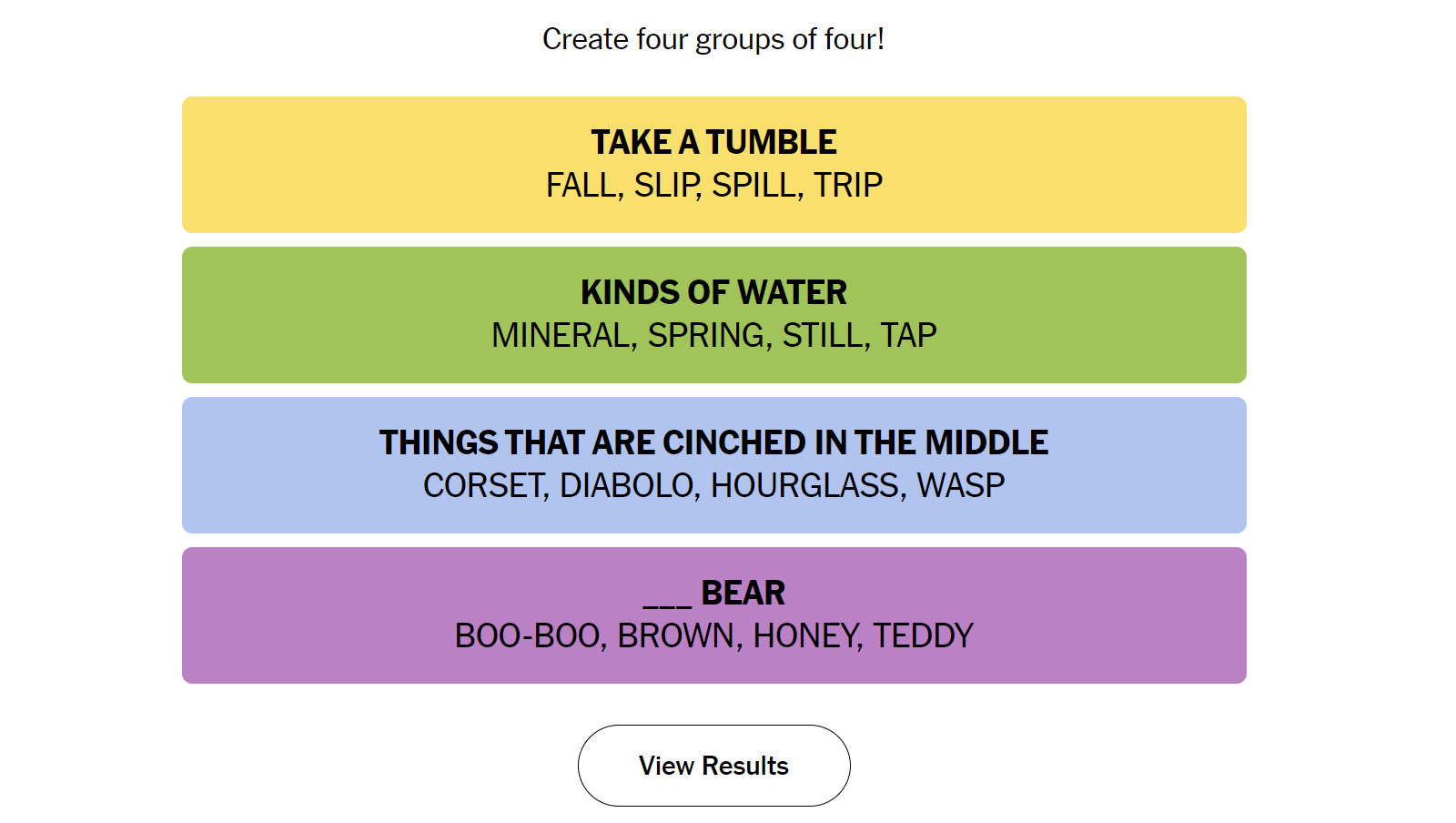Connections is a game from the New York Times that challenges you to find the association between words. It sounds easy, but it isn’t—Connections categories can be almost anything, and they’re usually quite specific. If you need a hand getting the answers, we’ve got you covered.
What Is Connections?
Connections is a puzzle game from the New York Times. The objective is simple: sort 16 words into groups of 4. Each group of words will be connected by some common idea or theme. That common element could be anything from the number of letters in the words to a common use for all the words. Once you’re confident, select 4 words, then hit “Submit.” You have only four attempts in total, so don’t be too guess-happy.
Hints for Today’s Connections Categories
Here are a few small hints to get you started on the 294th Connections game.
- Yellow: Down is normal.
- Green: Essential for life.
- Blue: A physical attribute
- Purple: Sometimes fuzzy?
What Are Today’s Connections Categories?
If you’re still struggling, the actual categories are:
- Yellow: Take a tumble
- Green: Kinds of Water
- Blue: Things That Are Cinched in the Middle
- Purple: ____ Bear
Today’s Connections Answers
 Yellow:
Yellow:
Fall, Slip, Spill, Trip
Green:
Mineral, Spring, Still, Tap
Blue:
Corset, Diabolo, Hourglass, Wasp
Purple:
Boo-boo, Brown, Honey, Teddy
How Did We Solve This Puzzle?
This puzzle seemed more straight forward that some we’ve seen recently, and didn’t require too many logical leaps.
The first group of words we noticed were slip, fall, spill, and trip—all words that can be used to describe falling over. They made up the yellow category.
We next noticed that tap and spring are both types of water, and that mineral and still can also describe water, so we took a chance on that as a group. Those four words make up the Green group, “Kinds of Water.” It was a little surprising that a category about water wasn’t blue.
As usual, things get a little easier with fewer words. Boo-boo, honey, brown, and teddy are all bears, of course, and the Purple category was aptly named “____ Bears.”
The last category, which must be Blue, was obviously made up of corset, diabolo, wasp, and hourglass. Corsets, wasps, and hourglasses are all pretty common terms, but diabolo is decidedly more niche. A diabolo is a type of large yo-yo that resembles two bowls connected bottom to bottom. The thing all of these words have in common? Their physical shape. Each is “Cinched in the Middle,” which inspired the category name.
How Do You Guess Connections Categories?
There is no quick, reliable way to approach Connections like there is with Wordle, since Connections isn’t algorithmic. However, there are a few things to keep in mind that can help.
- Look for similar parts of speech. Are some words verbs and others nouns? Are some adjectives? Try mentally grouping them based on those categories and see if any other patterns jump out at you.
- Are the words synonyms? Sometimes categories will just be synonyms for a phrase, or very close to synonyms. Don’t rely too closely on this, though. Sometimes Connections will deliberately throw in words that are sometimes synonyms to mislead you.
- Try saying the words. Sometimes, saying the words helps. One puzzle we saw included the words go, rate, faster, clip, pace, speed, move, commute, and hurry—all of which are obviously related to the idea of motion. However, when you say them, it becomes a little more obvious that only four (go, move, hurry, faster) are things you’d actually say to prompt someone to get moving.
- Expect the red herring. Connections usually has words that could be plausibly, yet incorrectly, grouped together. Take the words Bud, Corona, and Light, as an example. You might instinctively see those three words together and assume they’re lumped together in a category related to beer—but they weren’t.
- Look for distinct words. If a word on your board doesn’t have multiple meanings or can really only be used in one context, try using that word as the basis for a category.
If you didn’t solve this one, don’t feel too bad—there’s always tomorrow! And those words may align with a topic you’re interested in, giving you a leg up on the competition.

